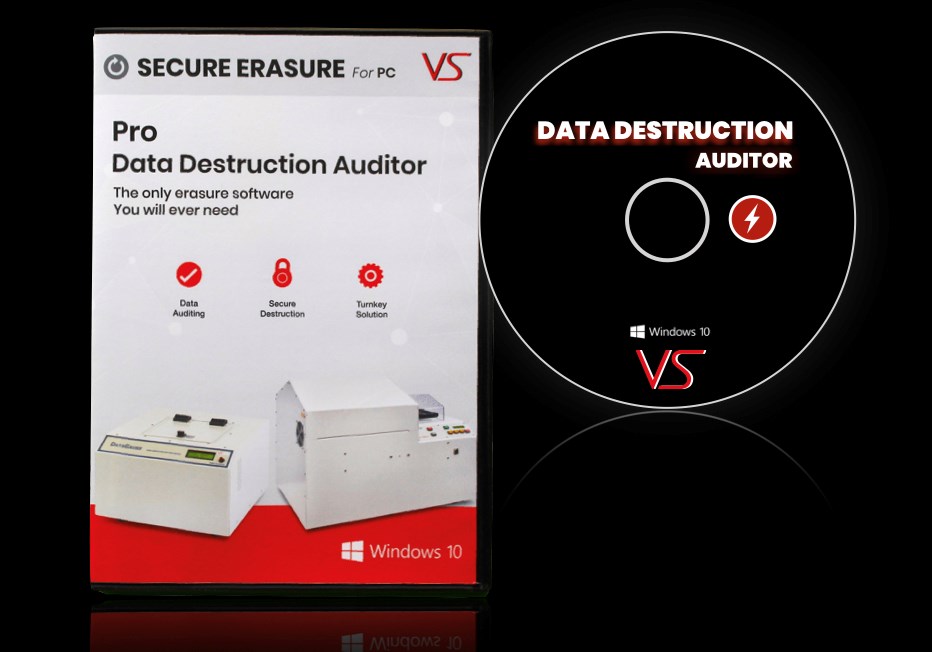Checking Out the Significance of Data Damage in the Context of Computer System Security Providers and Protecting Confidential Information
In an era where data violations are increasingly typical, the significance of effective data devastation can not be overemphasized. What approaches can companies apply to boost their data destruction procedures?
Comprehending Data Destruction
Information damage is a crucial component of computer security that involves the irreversible elimination of information from storage gadgets to avoid unauthorized access and potential data breaches. In a progressively electronic landscape, companies encounter increased dangers connected with sensitive details being incorrectly accessed or made use of. Efficient data destruction safeguards against these hazards, making sure that personal dataâEUR" such as customer info, intellectual property, and financial recordsâEUR" can not be recouped after disposal.
Comprehending the value of information devastation prolongs beyond simple conformity with legal and regulatory structures; it is vital for keeping organizational honesty and count on. When information is incorrectly managed or improperly destroyed, the repercussions can be extreme, consisting of financial loss, reputational damage, and legal obligations.

Approaches of Information Removal

One prevalent approach is data wiping, which entails overwriting existing information with random patterns several times. This strategy renders the original data irretrievable, making it a popular choice for companies looking for to secure secret information.
One more approach is degaussing, which uses an effective magnetic area to disrupt the magnetic domains on storage gadgets, effectively getting rid of the information. This approach is specifically effective for magnetic media however is not applicable to solid-state drives.
Physical devastation is another durable technique, including the shredding or crushing of storage space gadgets. This method guarantees that data healing is basically impossible, making it perfect for very sensitive information.
Last but not least, file encryption can act as a corresponding technique to data eradication. By securing data prior to removal, companies can include an extra layer of safety, guaranteeing that even if remnants are recouped, they stay unattainable without the decryption key. Each approach needs to be picked based on the level of data sensitivity and the certain protection requirements of the organization.
Legal Compliance and Information Safety And Security
Organizations need to navigate an intricate landscape of lawful needs connected to information security, particularly after carrying out approaches of data elimination. Various regulations, such as the General Information Defense Policy (GDPR) and the Wellness Insurance Coverage Transportability and Accountability Act (HIPAA), impose strict standards on how companies need to get rid of and manage of sensitive information. Failure to adhere to these regulations can result in substantial lawful effects, including significant penalties and reputational damages.
Information destruction procedures should be diligently documented to demonstrate compliance with suitable regulations and standards. This paperwork not just serves as proof of adherence to legal commitments yet additionally highlights a dedication to safeguarding delicate details. Organizations should also develop clear plans regarding information retention and devastation timelines, making certain that data is not held longer than essential.

Additionally, normal audits and assessments of data Discover More damage techniques are vital to maintain compliance and adapt to developing lawful structures (data destruction). By proactively attending to legal requirements, organizations can mitigate threats linked with information violations and demonstrate their dedication to data security. Inevitably, prioritizing legal compliance in information destruction procedures is not simply a regulatory obligation, however a fundamental aspect of a robust data security strategy
Influence On Company Track Record
The track record of a business can be dramatically impacted by its strategy to data damage and administration. In today's digital landscape, where data breaches can happen at any type of minute, the failure to correctly take care of delicate information can lead to extreme repercussions. Organizations that improperly manage data damage risk exposing personal customer details, which not just violates personal privacy laws however additionally wears down trust fund amongst stakeholders and clients.
A damaged track record can lead to decreased customer commitment, as customers come to be hesitant to engage with an organization that has shown negligence in safeguarding their information. In addition, unfavorable publicity surrounding an information violation can have a lasting result, as prospective consumers may be discouraged by the perceived absence of security. This can bring about a straight decrease in earnings and market share.
In addition, companies that prioritize information damage as component of their safety method can enhance their track record by showcasing their commitment to guarding sensitive details. By adopting rigid data management practices, organizations can not just reduce risks yet also position themselves as reliable entities in their particular industries, therefore strengthening their overall brand name photo.

Finest Practices for Secure Disposal
Implementing finest practices for safe and secure disposal of information is vital for minimizing risks connected with site data breaches and making certain conformity with privacy policies. Organizations needs to embrace a thorough data disposal policy that lays out treatments for both electronic and physical data damage.
For physical information storage gadgets, such as disk drives, shredding or degaussing is recommended to prevent data healing. Furthermore, companies must keep a chain of wardship paperwork throughout the disposal procedure, making certain responsibility and traceability of disposed things.
For electronic information, utilizing software application that abides by industry standards for data cleaning is essential. This software application should overwrite existing information multiple times, making recuperation basically difficult. It is also essential to verify the efficiency of the data damage procedure via audits or third-party assessments.
Training staff members on safe disposal techniques includes another layer of security, as human error can commonly bring about data direct exposure. On a regular basis updating and examining disposal policies makes certain placement with progressing laws and technological improvements. By applying these ideal practices, companies can dramatically reduce the danger of unauthorized information gain access to and enhance their overall information security approach.
Verdict
In conclusion, data devastation is a fundamental facet of computer safety and security services that guarantees the protection of private information from unauthorized access. Implementing efficient techniques of information obliteration, sticking to legal conformity, and acknowledging the effect on service reputation are essential elements of an extensive data safety strategy. By taking on finest techniques for safe disposal, companies can promote depend on with customers and protect sensitive data, eventually adding to a much more safe digital landscape.
In an era where information violations are significantly typical, the value of reliable data damage can not be overstated.Information damage is a vital part of computer security that involves the irreversible removal of data from storage devices to stop unapproved accessibility and potential information breaches. Organizations should likewise establish clear policies pertaining to data retention and imp source destruction timelines, guaranteeing that information is not held longer than necessary.
By proactively attending to lawful demands, companies can alleviate risks associated with data breaches and demonstrate their dedication to data safety (data destruction). Inevitably, focusing on lawful compliance in data damage processes is not simply a regulative obligation, yet a fundamental facet of a robust information security method